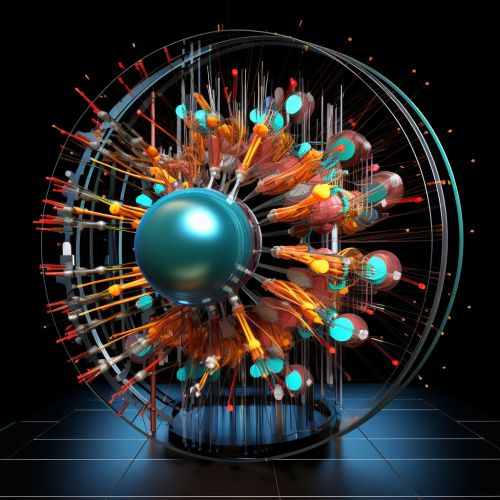Gauge boson
Introduction
A gauge boson is a type of boson that mediates the strong, weak, and electromagnetic fundamental forces in the universe. These particles are integral to the Standard Model of particle physics, which describes the behavior of all known subatomic particles. Gauge bosons are characterized by their integer spin, which distinguishes them from other types of bosons known as scalar bosons.


Fundamental Forces and Gauge Bosons
The three fundamental forces mediated by gauge bosons are the strong force, the weak force, and the electromagnetic force. Each of these forces is associated with a specific type of gauge boson: the gluon mediates the strong force, the W and Z bosons mediate the weak force, and the photon mediates the electromagnetic force.
Strong Force and Gluons
The strong force is the force that holds protons and neutrons together in the nucleus of an atom. This force is mediated by gluons, which are massless and have a spin of 1. Gluons are unique among the gauge bosons in that they can interact with each other, leading to the phenomenon known as color confinement.
Weak Force and W and Z Bosons
The weak force is responsible for certain types of radioactive decay, such as beta decay. This force is mediated by the W and Z bosons. Unlike gluons, these bosons are massive, with the W bosons carrying a charge of either +1 or -1, and the Z boson being neutral.
Electromagnetic Force and Photons
The electromagnetic force is responsible for the interactions between charged particles. This force is mediated by photons, which are massless and have a spin of 1. Photons are unique among the gauge bosons in that they do not interact with each other.
Gauge Invariance and Gauge Bosons
The concept of gauge invariance is central to the role of gauge bosons in the Standard Model. Gauge invariance refers to the fact that the laws of physics do not change under certain transformations, known as gauge transformations. In the context of the Standard Model, gauge invariance leads to the existence of the gauge bosons and determines their properties.
Quantum Chromodynamics and Gluons
Quantum chromodynamics (QCD) is the theory that describes the strong force and the behavior of gluons. In QCD, the color charge of quarks and gluons is conserved, leading to the phenomenon of color confinement. This means that quarks and gluons can never be observed in isolation, but only as part of larger particles known as hadrons.
Electroweak Theory and W and Z Bosons
The electroweak theory unifies the weak force and the electromagnetic force into a single force, known as the electroweak force. This theory predicts the existence of the W and Z bosons and their properties. The discovery of these bosons in the 1980s provided a major confirmation of the electroweak theory.
Quantum Electrodynamics and Photons
Quantum electrodynamics (QED) is the theory that describes the electromagnetic force and the behavior of photons. In QED, the electric charge of particles is conserved, leading to the prediction of the existence of photons and their properties.
